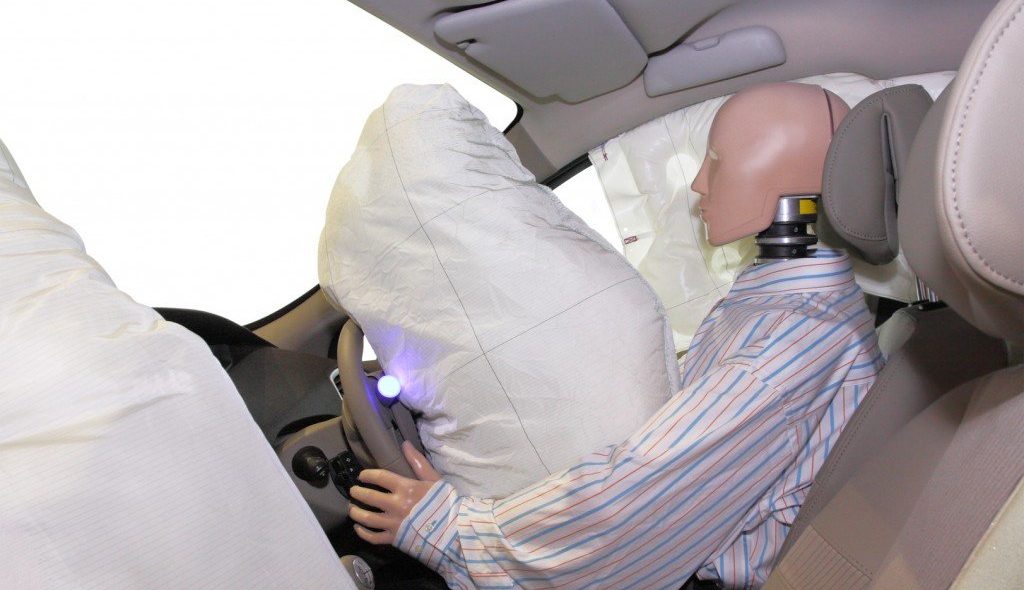Airbags in Cars: A Life-Saving Innovation with Vital Functions, History, Importance, and Potential Risks
Table of Contents
Introduction

Airbags have revolutionized vehicle safety and transformed the landscape of automobile accidents. These inflatable safety devices play a crucial role in protecting occupants during collisions by absorbing the impact forces and reducing injuries. In this article, we will delve into the history of airbags, their functions, the visionary inventor behind this life-saving innovation, their importance in modern vehicles, and potential risks associated with their use.
1. The Evolution of Airbags and Their Functions
The concept of an airbag dates back to the early 1950s when automotive engineers and researchers began exploring passive safety systems. However, it wasn’t until the 1970s that the airbag technology matured enough for commercial application. The first commercial airbag system was introduced by General Motors (GM) in 1973 as an option in certain vehicles. Over the years, airbag systems have become standard equipment in most modern automobiles.
1.1. Function of Airbags
The primary function of an airbag is to act as a supplementary restraint system (SRS) to complement seat belts and protect occupants during sudden deceleration or impacts. When a vehicle experiences a collision, the airbag system deploys within milliseconds to create a cushioning barrier between the occupants and the interior surfaces of the vehicle. The rapid inflation and deflation of the airbag help absorb the impact energy and distribute it over a larger surface area, reducing the force exerted on the occupants.
The airbag system usually consists of several components, including crash sensors, an electronic control unit (ECU), and the airbag itself. The crash sensors detect the sudden deceleration or changes in vehicle motion, signaling the ECU to trigger the airbag deployment. Once deployed, the airbag provides a protective cushioning to the head, chest, and upper body of the driver and front-seat passengers, helping to mitigate the risk of severe injuries or fatalities.
2. The Visionary Inventor behind the airbags in cars
The invention of the airbag is credited to two engineers – John W. Hetrick and Allen K. Breed.
2.1. John W. Hetrick
John W. Hetrick, an industrial engineer from Pennsylvania, is often considered the originator of the concept of the airbag. Inspired by an incident in 1952 when he had to make a sudden stop while driving with his family, Hetrick began thinking about ways to improve automobile safety. His early concept involved an inflatable cushion that could deploy during a collision to protect the occupants. In 1953, Hetrick filed a patent for his invention titled “Safety cushion for automotive vehicles.” However, the concept did not gain much attention or practical implementation at that time.
2.2. Allen K. Breed
It was Allen K. Breed, an engineer at the automotive components manufacturer Breed Corporation, who further developed the concept of airbags and conducted extensive research and testing. In the late 1960s, General Motors collaborated with Breed Corporation to refine the airbag technology, leading to the first commercial airbag system introduced in GM vehicles in the early 1970s.
Despite their pioneering work, Hetrick and Breed did not profit significantly from their inventions, as airbags became widespread only after manufacturers like GM, Ford, and Chrysler began implementing them on a larger scale.
3. Importance of Airbags in Modern Vehicles
The widespread adoption of airbags in modern vehicles has had a profound impact on road safety and accident survivability. Here are some key reasons why airbags are of paramount importance:
3.1. Enhanced Occupant Protection
Airbags serve as a critical line of defense during accidents by cushioning the impact and reducing the risk of severe injuries to the head, chest, and upper body regions of occupants. They significantly decrease the likelihood of fatalities and enhance the chances of survival in high-velocity crashes.
3.2. Complementing Seat Belts
Airbags work in tandem with seat belts to provide comprehensive protection during collisions. While seat belts prevent occupants from being thrown forward, airbags prevent them from impacting the steering wheel, dashboard, or windshield.
3.3. Protection in Different Collision Scenarios
Airbags are designed to deploy in various collision scenarios, including frontal impacts, side impacts, and rollover accidents. They adapt their deployment strategy based on the severity and direction of the impact, providing tailored protection to occupants.
3.4. Occupant-Sensing Technology
Modern airbag systems are equipped with advanced occupant-sensing technology that takes into account factors such as seat position, weight, and the presence of passengers. This technology enables the airbags to deploy with appropriate force, reducing the risk of injury to smaller occupants, such as children or frail individuals.
3.5. Reduced Injury Severity
Studies have shown that the implementation of airbags in vehicles has resulted in a considerable reduction in the severity of injuries sustained by vehicle occupants during accidents. By minimizing the impact forces experienced by occupants, airbags contribute to a decrease in head, neck, and chest injuries.
4. Potential Risks Associated with Airbag Use
While airbags are crucial safety features, their deployment can pose certain risks if not used correctly or if the system malfunctions. Some of the potential risks associated with airbag deployment include:
4.1. Airbag-Related Injuries
Although airbags are designed to minimize injuries, they can still cause harm in certain situations. When deployed with excessive force, airbags may lead to injuries such as abrasions, bruises, or burns, particularly to the face, arms, or hands. These injuries are often referred to as “airbag-related injuries.”
4.2. Risk to Vulnerable Populations
Airbags can be especially dangerous for small children, infants, and small-statured adults. Deploying with significant force, airbags may lead to serious injuries or fatalities for these vulnerable populations. As a result, it is crucial to place children in appropriate child safety seats and seat them in the backseat of the vehicle to minimize the risks associated with airbag deployment.
4.3. Unintended Deployments
In rare cases, airbags may deploy unintentionally or without a collision occurring. These unintended deployments can be caused by faulty sensors, electrical malfunctions, or improper maintenance. Such deployments can startle the driver, obstruct the view, and potentially lead to accidents.
4.4. Disabling Airbags
Some drivers and passengers may choose to disable their airbags due to concerns about potential injuries or discomfort during deployment. However, disabling airbags should be done with great caution, as it removes a crucial safety feature and increases the risk of severe injuries in the event of a collision.
5. Conclusion
Airbags have become an indispensable safety feature in modern vehicles, playing a vital role in reducing the severity of injuries and saving countless lives during accidents. The evolution of airbags from a mere concept in the 1950s to a standard safety feature in contemporary automobiles is a testament to the dedication of visionary inventors and automotive manufacturers. Despite their importance, it is essential to recognize the potential risks associated with airbags and implement proper safety measures to ensure their effectiveness and mitigate potential harm to occupants.
As automotive technology continues to advance, airbag systems are likely to become even more sophisticated and capable of providing enhanced protection in various collision scenarios. With ongoing research and development, we can expect the continual improvement of airbag technology, reinforcing their crucial role in keeping passengers safe on the roads.
How do car airbags activate?
Car airbags activate through a series of events triggered by sensors and control units within the vehicle. The process is designed to detect and respond to sudden deceleration or impacts, deploying the airbags to protect occupants during a collision. Here’s a general overview of how car airbags activate:
1. Crash Sensors:
Modern vehicles are equipped with various crash sensors strategically placed throughout the car. These sensors are designed to detect sudden changes in motion, such as rapid deceleration or impacts. The most common types of crash sensors include:
a. Accelerometers: These measure changes in acceleration, detecting when the vehicle comes to a sudden stop or experiences a collision.
b. Gyroscopes: Gyroscopic sensors detect changes in the vehicle’s orientation, indicating a potential rollover or side impact.
c. Side Impact Sensors: These are specific sensors that detect lateral impacts, such as a T-bone collision.
2. Electronic Control Unit (ECU):
The crash sensors are connected to the Electronic Control Unit (ECU), which is a computer system responsible for monitoring and controlling various safety features in the vehicle, including airbags. The ECU continuously receives data from the crash sensors and evaluates the severity and type of impact based on the sensor readings.
3. Deployment Criteria:
The ECU is programmed with specific deployment criteria or algorithms that determine when the airbags should be activated. These criteria consider factors such as the rate of deceleration, direction of impact, and other relevant data to assess the potential risk to occupants.
4. Airbag Activation:
When the ECU determines that the impact meets the predefined criteria for airbag deployment, it sends an electrical signal to the airbag inflator. The inflator is a small explosive device that contains a chemical propellant, usually sodium azide or a similar compound.
5. Rapid Inflation:
Upon receiving the signal from the ECU, the airbag inflator ignites the chemical propellant, resulting in a rapid chemical reaction that produces a large volume of gas, typically nitrogen. This gas fills the airbag rapidly, causing it to inflate within milliseconds.
6. Airbag Deployment:
The fully inflated airbag bursts out of its storage location, which is typically within the steering wheel for the driver’s side airbag and within the dashboard or side of the vehicle for passenger-side airbags. In some vehicles, side curtain airbags might deploy from the roof or side pillars to protect occupants’ heads in a side impact.
7. Occupant Protection:
The inflated airbag acts as a cushion between the occupants and the vehicle’s hard surfaces, such as the steering wheel, dashboard, or side door. By absorbing and distributing the impact forces over a larger area, the airbag helps reduce the risk of serious head, chest, and upper body injuries.
8. Airbag Deflation:
After deployment, the airbag begins to deflate slowly, allowing occupants to move away from the inflated bag safely. The deflation process may take a few seconds.
It’s crucial to note that not all collisions will trigger airbag deployment. The ECU’s deployment criteria are designed to activate the airbags only in more severe impacts that pose a significant risk to occupants. Additionally, some vehicles may have advanced occupant-sensing technology that tailors airbag deployment based on factors such as seat position, weight, and the presence of passengers. This technology helps avoid deploying airbags with unnecessary force and reduces the risk of injuries to smaller occupants, such as children.

